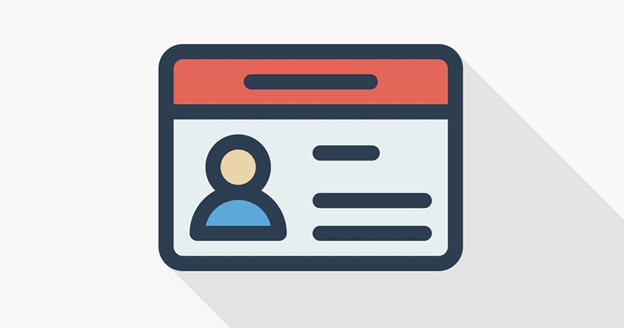A company ID badge is one of the key components to the security of your company. It is a direct representation of your company, and as such, it ought to reflect your brand well. It may seem like a simple endeavor, but designing your company badge can go wrong in a number of ways. Here are three questions to consider to help you design a simple and sophisticated yet secure and difficult-to-replicate company ID badge.
- What design elements will you include on the ID badge?
You need to determine what colors, font, text size, background, layout and orientation are appropriate for your design. These elements should all be reflective of your organization, not just the type of organization but also the culture you wish to promote. The design elements of your badge ought to be chosen carefully.
For example, if you are creating ID badges for a law firm, you want the design to carry a serious tone. You might choose a monochromatic scheme versus a colorful scheme that a fashion magazine would opt for. If you are designing badges for a graphic design or marketing firm, you don’t want a design that appears crowded or underwhelming. If your company serves the technology sector, you want your design to reflect innovation.
Regardless of the company your design represents, you should strive for simplicity. It is, after all, a company badge and not an advertisement. Your color scheme should include no more than two colors and no more than one non-neutral color. The text should be in an easy-to-read font and should not overcrowd. The layout should emphasize the employee photo and/or security feature you chose.
Although you want to include the necessary information, you also want to keep your design simple. It is important that you maintain a balance between a simple, sophisticated design and a practical badge… which leads to the next question you should consider to help you design a company badge.
- How does your design balance aesthetic and practicality?
This is a tricky balance. Are you including all the information you need, or are you cutting out elements that affect the aesthetic of your badges? Or are you doing the opposite and overcrowding the design with unnecessary elements? Rather than jumping straight into your design software, it would benefit you to take some time to plan.
Determine all the elements that need to be included in your design first. Then find how to position them in the layout. This is better than having to adjust accordingly as you realize that you need to include more in your badge. Planning ahead also prevents you from overlooking small details, such as not leaving enough room for a slot punch, that end up disrupting your design.
You should only include the elements that are absolutely necessary, such as employee photo, company name and a security feature such as QR code or barcode. The goal is to find a balance between making sure you have all the information you need on the badge and not overcrowding the design.
Remember to take some time to plan the layout of your badge. If time is of the essence, you can use cloud-based ID badge software that allows you to securely access and edit your designs from remote locations. You can also take, edit and import photos easily with this software. It is user-friendly and allows you to add a lot of customization to your design.
Once you have developed a sophisticated design that incorporates all the information you need, you also want to make sure you have enough security features on the badge.
- Is your design secure?
This is the most important question to consider. After all, the primary purpose of the badge is to secure access to your company. Sure, you can have a badge with a sophisticated design, but if you include too little for the sake of aesthetics, the badge can be easily replicated.
Although you want to keep design in mind, security remains your top priority.
Be careful not to include too much company information in the design. It is a good idea to exclude sensitive company information such as employee ID numbers.
Strive to include at least one difficult-to-replicate element in the design. Consider using a hologram, watermark or a QR code to ensure your company’s badge cannot be replicated. It may even be more secure for your company to use virtual badges. You can use cloud based badging which allows for real-time vetting of virtual badges. This way, you can immediately shut off badges for personnel who are no longer allowed to access your company. If you use cloud-based badging, you can also take advantage of roster-tracking, which involves keeping a list of badges that have been scanned so you can easily identify any that have been duplicated.
Cloud-based badging also protects the database in which you store company badges. This helps you prevent someone from simply printing out a badge to gain access to your company after hacking your database.
The most important element to consider when you design a badge for your company is security. However, it is also important to consider how the design visually represents your company. If you keep these three questions in mind, you can easily create a sophisticated yet secure design for your company ID badge.

